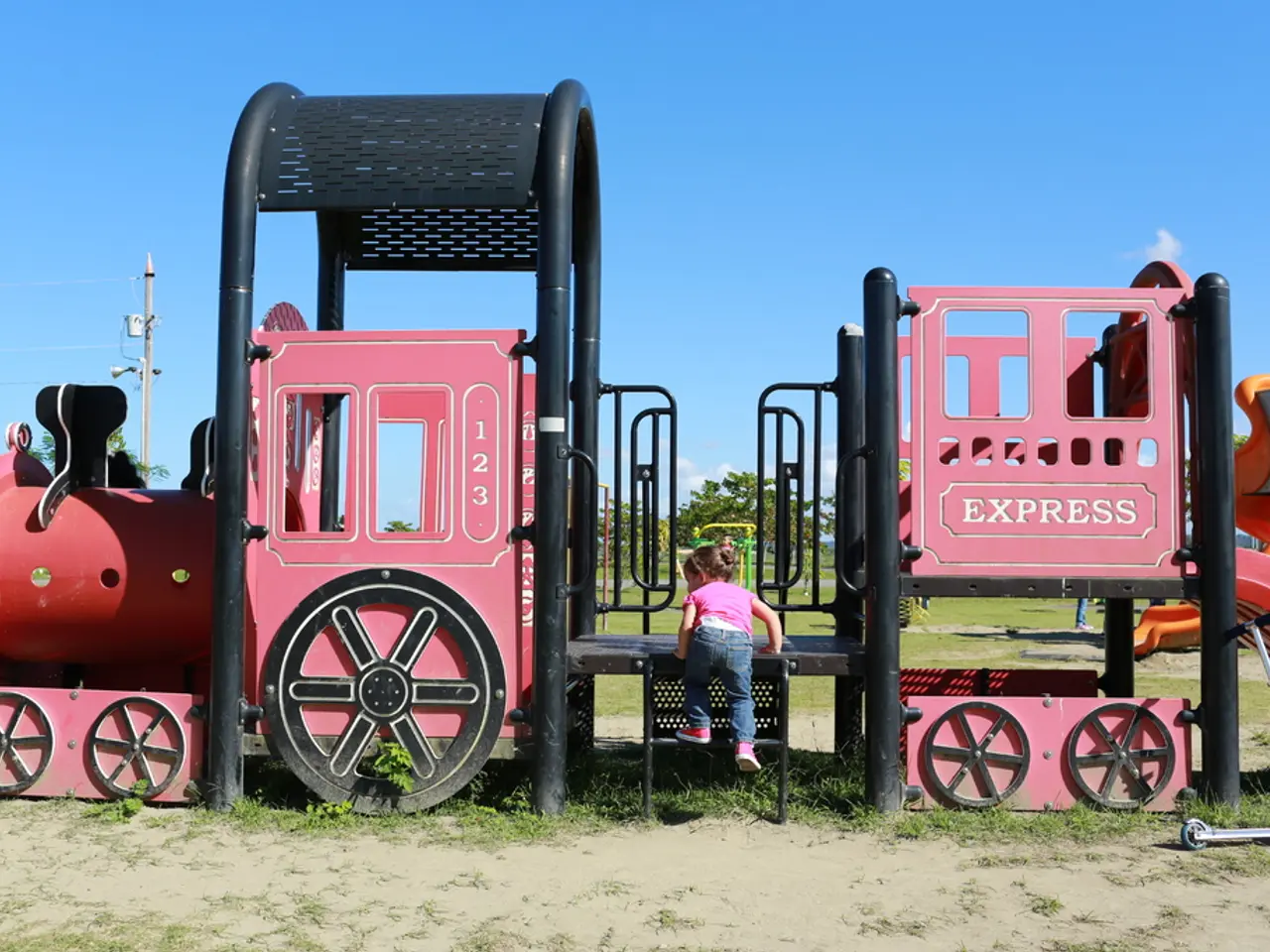Unsafe play zones: Nearly half of children avoid visiting these locations
In a recent study published by playground equipment specialist ESP Play, concerns about the safety and condition of playgrounds in the UK have come to light. Andrew Wood, the Managing Director of ESP Play, stated that the research highlights a significant issue: the nation is letting children down by not providing safe and enjoyable outdoor play spaces.
Professor Helen Dodd, an expert in the field, echoed this sentiment, claiming that play is essential for a happy, healthy childhood. Hygiene issues, such as excessive dog faeces, are the top worry for more than a quarter (28%) of parents, while poor condition of the equipment is the main reason for keeping children away for two out of five parents (44%).
The study revealed that one in two UK children rarely or never visit playgrounds, and 39% of parents' children play video games instead of going outdoors. Worryingly, one in three children (32%) have suffered an accident or injury due to poor quality equipment.
In response to these concerns, local authorities in the UK are implementing several measures to improve playground safety and maintenance. These include regular and structured inspections of playground equipment, routine maintenance programs, upgrading physical access and security features, education and supervision initiatives, and compliance enforcement by safety bodies.
Regular inspections follow safety standards such as BS EN 1176, which provide checklists and protocols for maintenance. Routine maintenance programs include preventative measures to sustain playground safety and prolong equipment lifespan. Authorities are also focusing on accessibility, ensuring gate widths accommodate wheelchairs and prams, creating inclusive play spaces for all children.
Education and supervision initiatives provide guidelines for adults and caregivers to supervise actively, teach children safe play practices, and establish clear playground rules. Compliance enforcement by safety bodies, such as the Health and Safety Executive (HSE), ensures public safety standards are met.
Half of all parents say that their children do not go to a playground, with safety concerns being the biggest barrier for more than a third (36%) of parents. In light of these findings, Andrew Wood and 54% of parents are calling on local authorities to be doing more to ensure playgrounds return to being a safe place for children to explore.
Andrew Wood also stated that childhood is supposed to be fun, and failing to provide the same opportunities risks damaging future generations. He emphasised that poor maintenance and safety hazards in playgrounds endanger children's physical safety and impede their social and emotional development.
Looking back, 75% of parents played in parks at least once a week when they were their children's age. The hope is that these new measures will allow future generations to enjoy the same benefits of outdoor play.
- Science plays a crucial role in ensuring the safety and quality of playground equipment through standards like BS EN 1176, which provide maintenance checklists and protocols.
- Education and self-development are essential for a happy, healthy childhood, and safe, well-maintained playgrounds contribute to this by promoting physical, social, and emotional development.




